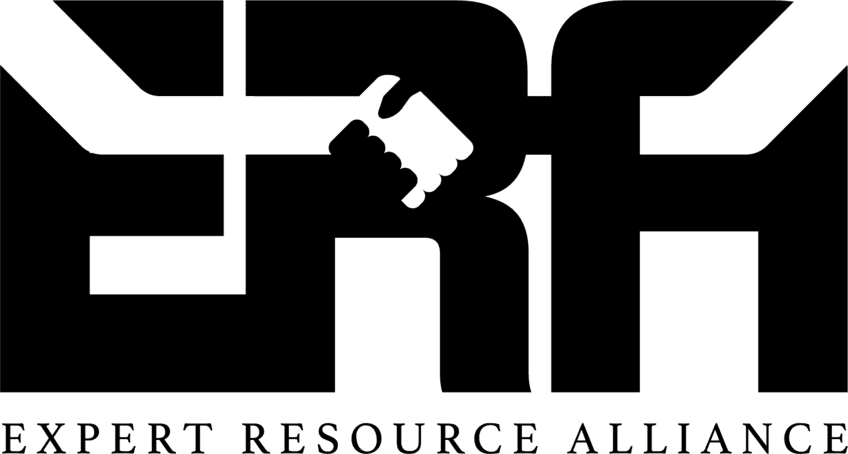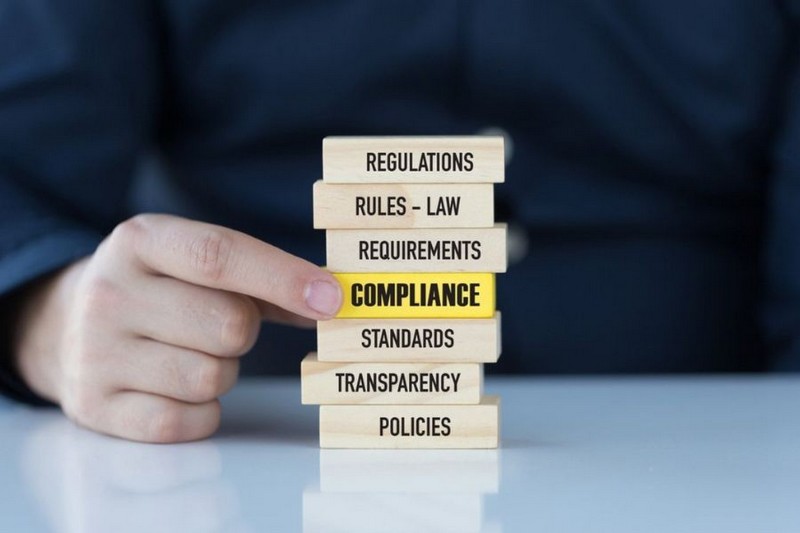Key Takeaways
- HR compliance meaning refers to ensuring that workplace rules align with city, state, province, country, and even global labor laws and any industry-specific regulations.
- As an HR professional, you need to avoid compliance issues such as incorrect payroll calculations, failure to provide employee benefits, and irregularities in hiring.
- An HR compliance checklist covers Employee Benefits, Workplace Safety, Hiring and Interviewing, Onboarding, Data Privacy, and Management training.
What Is HR Compliance?
HR compliance is a process of creating rules to ensure your company follows the latest labor laws and regulations about work. HR ensures company rules match local and national laws and that everyone in the company complies.

1. Importance Of Compliance In Human Resources
Most companies focus on HR legal compliance mainly to avoid risks and fines. But it’s not just about avoiding penalties. HR compliance also protects the company’s reputation and employee’s trust. With HR Compliance,
- It ensures the company follows the Labor Standards Act, which covers overtime pay and minimum wage.
- It helps prevent lawsuits related to hiring practices.
- It ensures proper management of benefit programs and pay, which can change often.
- It helps employers understand their compliance duties and meet them using tools like on-time execution, audit trails, and automated notifications.
2. Who’s Responsible For Workplace Compliance?
The Human Resource Compliance officer creates and enforces policies to meet compliance needs. Usually, the owner, CEO, or HR Director in charge of HR compliance depends on the company’s structure and laws.

9 Common HR Compliance Issues
Throughout an employee’s time with a company, HR compliance problems can pop up. Here are some examples:
1. Inaccurate Calculation of Wage And Tax
The United States has specific federal, state, and local regulations to protect workers’ rights, covering aspects such as maximum daily work hours, overtime pay rates, and compensation for weekend work.
State and city laws can override the federal minimum wage of $7.25 per hour. For example, in Oregon, the minimum wage is $14.25 per hour, while in Portland, the state’s most populous city, it is $15.45 per hour (as of May 2024).
Accurate and timely employee payments are crucial for maintaining workforce morale and avoiding wage claims. Additionally, you must calculate and file payroll taxes with government agencies to avoid audits or fines. Utilizing a payroll service to automate calculations, tax deductions, and payments can enhance accuracy, ensure compliance, and save time.
2. Misclassified Employees
Classifying workers as employees or contractors impacts their payroll, taxes, rights, benefits, and the company’s responsibilities. Misclassifying employees as contractors can deprive them of fair pay and legal protections.
Deliberately misclassifying employees to cut costs is a serious issue. Treating independent contractors like employees, such as by imposing office hours or schedules, can violate tax and labor regulations.
To ensure proper classification, start by distinguishing between employees and independent contractors. If uncertain, IRS Form SS-8, Determination of Worker Status for Purposes of Federal Employment Taxes and Income Tax Withholding, can help.
Next, identify which employees are non-exempt under the Fair Labor Standards Act, as they are entitled to minimum wage and overtime pay.
3. Overdue New Hire Reports
Child support agencies use the National Directory of New Hires to find parents who owe child support. You must notify your state agency within 20 days of hiring or rehiring an employee. Sometimes, the deadline is even shorter, and you may be fined if you don’t comply.
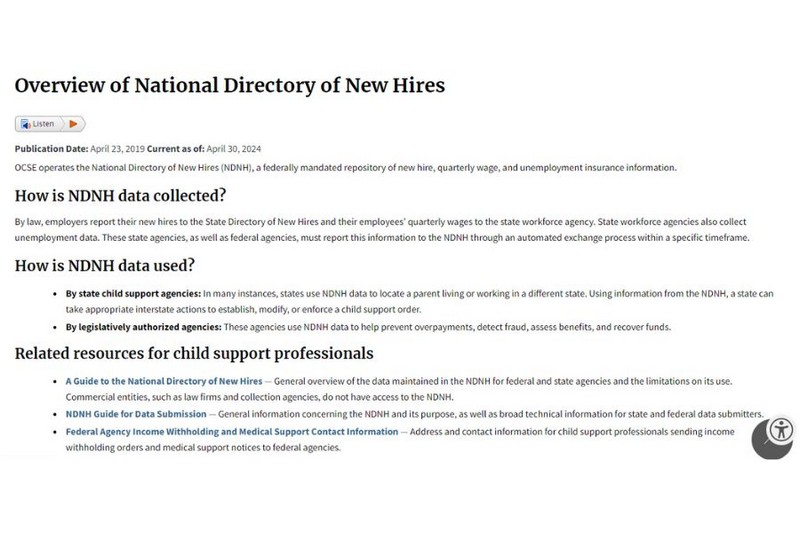
4. Inadequate FMLA
The Family and Medical Leave Act (FMLA) permits qualified employees in the United States to take unpaid time off for particular family or medical reasons without losing their job. This law ensures employees can take time off for childbirth, tending to an unwell family member, or managing their illness without worrying about termination.
Managing employee leave is challenging because you must comply with federal, state, and local leave laws while maintaining productivity. Ensure your policies and leave administration processes adhere to all applicable regulations to minimize liability.
5. Inadequate Health Insurance
Health insurance is a benefit that many companies offer; for some, it’s a requirement. If your company has 50 or more full-time or equivalent employees, you must provide health insurance under the Affordable Care Act (ACA) or face penalties. The health plan must also be affordable and meet ACA standards.
6. Improper Onboarding
Onboarding is when new hires learn how your business works and what rules they need to follow.
When employees know the right things to do and how to deal with problems like harassment, it can help prevent legal issues. It can also be helpful to let new employees follow their coworkers first to learn how to work well and stay safe.

7. Unsecure Information
Keep employees’ and job candidates’ personal and health information private, including electronic and digital data. Ensure a secure system for obtaining, storing, and sharing job applications, resumes, tax forms, bank information, and health care details.
You should store paper documents safely and only make them accessible to authorized people. Digital files should be password-protected and shared only with those who should see them.
For example, according to the California Consumer Privacy Act (CCPA), Californians have the right to know what data companies have about them and who they share it with.
8. Unfair Job Postings
Several laws are in place in the United States to prevent unfair hiring practices. These laws include Title VII of the Civil Rights Act and the Fair Labor Standards Act, among others.
They prohibit discrimination against protected groups such as race, religion, and disability during the hiring process. This rule means job advertisements cannot show a preference for any of these groups.
9. Irrelevant Interview Questions
During an interview, avoid questions revealing protected characteristics, delve into a candidate’s personal life, or disclose affiliations unrelated to the role. Such inquiries can offend potential employees and expose your company to discrimination lawsuits.
Instead, focus on questions that allow candidates to demonstrate their expertise. If candidates disclose a disability and request reasonable accommodations, you cannot refuse to hire them on this basis.
A Complete HR Compliance Checklist: 10 Key Items
Understanding HR compliance can be tricky because it keeps changing. New laws are in, old ones are out, and big court decisions can set new rules. But even with all these changes, there are ten crucial words to know when we follow the rules.

1. Statutory Compliance
Following statutory compliance means following local, state, or federal government laws. Employers must follow these laws or be in charge of a crime.
Statutory compliance covers the minimum age to work, the lowest hourly wage, and laws against discrimination. However, these laws can differ from one country to another, so it’s important to have HR compliance specific to each country (checklist item no. 9).
2. Regulatory Compliance
Regulatory compliance is like following rules set by a particular group, not just the government. It might be similar to following government laws, but a specific organization sets it.
For example, in the UK, it’s the Health and Safety Executive; in the US, it’s the Occupational Safety and Health Administration. They make rules to keep workplaces safe and prevent accidents or health problems. You could get in trouble with the law if you don’t follow these rules.
3. Contractual Compliance
Contractual compliance means following the agreement you make when you hire someone. Every type of employment has a contract, whether for full-time workers, hourly employees, interns, or freelance consultants.
This agreement might include rules about giving notice before leaving, providing a severance package, offering employee stock options, bonuses based on time worked, etc. Employees could sue in civil court if the employer doesn’t follow the contract.
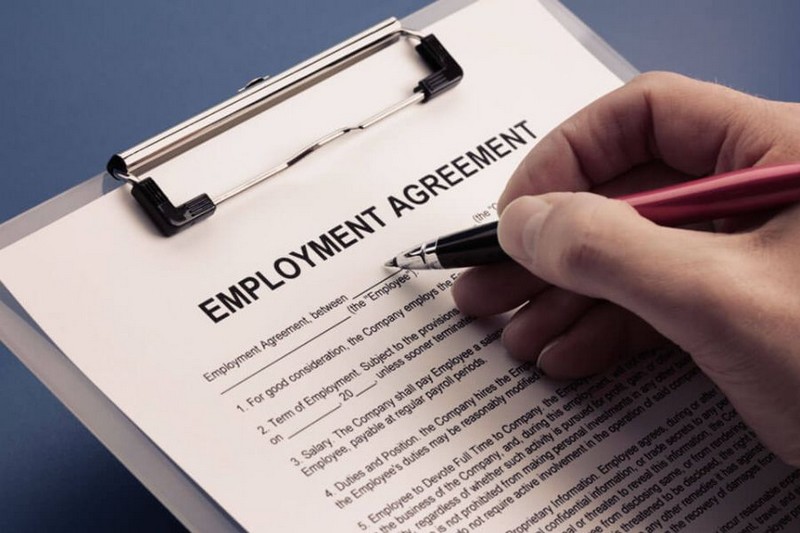
4. Union Employment Law Compliance
The National Labor Relations Act talks about rules for employee unions. Unions are groups of workers in the same industry, often in the same area, who work together to protect their rights. (Fun fact: The Screen Actors Guild is a union in America with over 100,000 performers and technicians!)
Following union laws helps companies keep their employees happy and prevent any unhappiness.
5. HR Technology Compliance
Focusing on this checklist item is essential as HR technology becomes more common. Your HR tech tools must follow many rules, like protecting employee data rights under State’s Data Privacy requirements. Also, the Health Insurance Portability and Accountability Act requires keeping certain health information safe, which affects your medical benefits system.
Usually, HR tech compliance is part of the agreements between a company and its HR tech provider.
6. Internal Compliance
Internal compliance means creating and enforcing rules within a company. These rules often follow laws and regulations.
For example, French labor law says people should work 35 hours a week. Companies with offices in France might make rules for a four-day workweek or a two-hour lunch break each day. Internal compliance helps ensure companies follow the more giant rules, not just talk about them.
7. Training Compliance
Training compliance means ensuring employees receive the required training in certain areas, as needed by their industry or location.

For instance, companies with five or more employees in California must give supervisors two hours of anti-harassment training and at least one hour for other employees. Different jobs, like nursing or manufacturing, might also have their own training rules.
Companies often use special software to track who has received the training to follow the rules.
8. International Labor Law Compliance
International labor law refers to regulations outlining the rights and responsibilities of employees, employers, and governments. The International Labour Organization (ILO) manages these rules with other organizations.
These international rules often influence the regulations in different parts of the world. There are two types: Conventions, which are like official rules, and Recommendations, which are more like suggestions.
Essential topics covered include the right to work, children’s rights, and stopping discrimination against women.
9. Country-Specific HR Compliance
Countries can make their own HR rules. For example, France passed the Right to Disconnect law, which affected companies with 50 or more employees. The age at which you can retire and start working can differ in each country.
Enterprises worldwide need to consider these things when making their own rules. Following each country’s rules helps them avoid hefty fines and other problems.
10. Workplace Compliance
Compliance in the workplace refers to the set of rules that employees must follow at work. These rules usually come from laws and regulations and ensure everyone behaves appropriately.
Workplace compliance includes the hours you have to work, taking breaks, working from home rules, what to wear, treating everyone fairly, and more.

4 HR Compliance Best Practices You Should Know
Following HR compliance best practices will help your company do well for a long time.
1. Organize Company Policies
Documenting company policies, whether in online platforms or an employee handbook, is vital in maintaining organizational coherence and streamlining workforce management. Key topics to cover may include:
- Company vacations
- Time tracking or attendance methods
- Social media guidelines (e.g., avoid sensitive information, protect company brand)
- Procedures for filing complaints
- Anti-discrimination and harassment policies
- Sick leave policies
- Dressing rules (e.g., business casual for office days, safety gear for factory workers).
- Pay plans
It’s essential to carefully craft these guidelines to avoid misunderstandings and ensure alignment with your business values. Moreover, official documentation should undergo legal review to ensure compliance with relevant laws and regulations.
2. Divide Compliance Duties Within The HR Team
To ensure HR compliance gets done right, divide up the responsibilities within your HR team. Here are some questions to help you organize:
- Shared responsibility or single person: Will compliance duties be shared among team members, or will one person be designated to lead? If choosing one person, do they possess the necessary knowledge and skills?
- Skills enhancement: If the designated person needs additional skills or knowledge, how can they acquire them?
- Hiring a compliance officer or team: Will you recruit a dedicated HR compliance officer, manager, or team or seek assistance from a consulting firm?
- Legal support: Do you require legal support? Will you utilize your company’s legal department or engage the services of an external provider?

3. Keep Up With The Latest Legal Changes
As labor regulations at the federal, state, and local levels are subject to periodic changes, HR professionals must remain vigilant and informed. Keeping abreast of these developments ensures compliance and minimizes risks for the organization. To stay informed about new regulations, consider subscribing to reputable resources such as:
- U.S. Equal Employment Opportunity Commission (EEOC).
- U.S. Department of Labor (DOL) and your respective state and local DOL offices.
- Society for Human Resource Management (SHRM).
Another valuable avenue to remain updated is by following ERA’s blog. For instance, this information source provides insights into new regulations concerning flexible working requests, effective from April 2024:
Starting on April 6th, the government permits employees to make a flexible working request from their first employment day. Previously, employees were only allowed to make one request per year and complete 26 working weeks before eligibility.
4. Communicate With Your Employees
To ensure comprehensive compliance training and resources, maintain regular communication with all employees regarding their tax and labor compliance roles.
Ensure clarity in communication accessible to everyone, encouraging reporting any suspicious activity encountered by everyone, not just HR professionals.
Executive leaders should actively endorse and exemplify compliance through their actions, boosting the long-term effectiveness of these communications.
Moreover, when company policies change, such as alterations to work hours or salary plans, promptly notify all affected employees and gather signatures to confirm receipt of the updated policy. Ensure the notice remains readily available for future reference.
Wrapping Up
HR compliance is about more than just paperwork. It’s about keeping your company’s reputation strong by showing you’re a trustworthy and fair employer and ensuring your workplace is welcoming for everyone.
At ERA, we’re happy to help your team achieve its HR goals. Get a free consultation with any questions or requests for assistance!
Frequently Asked Questions
1. What Is Legal Compliance In HR?
Legal Compliance in HR is about ensuring a company’s rules and actions comply with labor laws wherever they are. This job involves creating, writing down, and encouraging everyone to follow the rules and policies.
2. What Are The 3 Most Important HR Laws?
The three most significant HR laws are Title VII of the Civil Rights Act, Discrimination, and Labor Laws related to minimum wage and working conditions. These laws help create organizational human resource policies. If an employer has fifteen or more employees, their employees are protected, and they are EEOC.
3. How To Describe The HR Activity Of Compliance?
Compliance is an HR activity ensuring company policies are consistent with labor laws and industry-specific regulations. It involves creating policies and making sure everyone follows them every day.
4. What Are The Most Important HR Laws And Regulations?
Legal HR compliance topics every HR pros should know are:
- Rules against mistreating people at work
- How to hire and get new employees started
- Fair pay rules under the Fair Labor Standards Act (FLSA)
- Regulations about employee perks
- Keeping personal info about employees’ private
- Laws to keep the workplace safe
5. Give One Example Of A Compliance Issue That HR Managers Are Involved In
Human resource managers are responsible for ensuring equal employment opportunities, preventing unfair hiring practices, encouraging diversity in hiring, and addressing any issues related to discrimination or harassment in the workplace.
6. What Is Employee Compliance?
Employee compliance is when workers are familiar with all the laws governing their industry or job and know how to conduct business ethically. It often requires procedural training and encouragement to learn from mistakes.
Ms. Tracy has worked in human resource consulting for over 15 years. A driven entrepreneur focused on business expansion and people development. She previously worked as Country Manager for an international Australia firm that specializes in global workforce management, as well as several key roles as Business Growth Director and Executive Search Director for both large local firms to effectively drive their business growth. A strong emphasis is placed on aligning organizational priorities/objectives with business needs. She has a large network of local business leaders and a thorough understanding of the local market.
